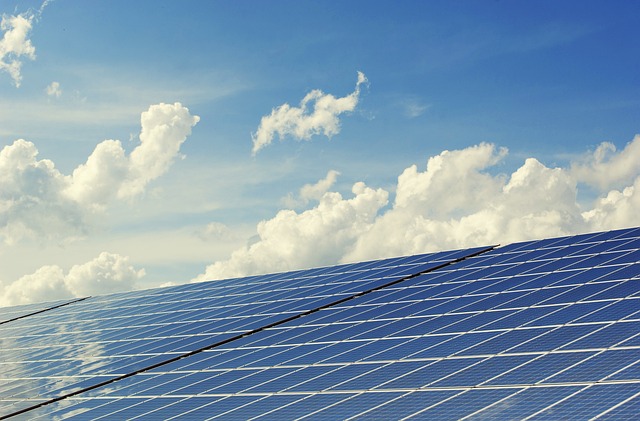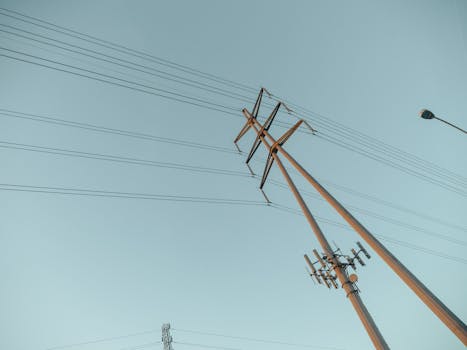“Effortlessly Power Your Future: Master Wiring Solar Panels to an MPPT Charge Controller!”
Wiring solar panels to an MPPT (Maximum Power Point Tracking) charge controller is a crucial step in setting up a solar power system. This process ensures that the energy generated by the solar panels is efficiently converted and stored in batteries for later use. An MPPT charge controller optimizes the power output from the solar panels by adjusting the electrical operating point, allowing for maximum energy harvest even under varying sunlight conditions. Proper wiring is essential for safety, efficiency, and the longevity of the system. This guide will outline the necessary components, safety precautions, and step-by-step instructions for successfully connecting solar panels to an MPPT charge controller.
Understanding MPPT Charge Controllers
Understanding MPPT charge controllers is essential for anyone looking to optimize their solar energy system. MPPT, or Maximum Power Point Tracking, is a technology that significantly enhances the efficiency of solar power systems by ensuring that the solar panels operate at their maximum power output. This is particularly important because solar panels produce varying amounts of electricity depending on factors such as sunlight intensity, temperature, and shading. By utilizing an MPPT charge controller, users can capture more energy from their solar panels, which translates to better performance and increased energy yield.
At the core of an MPPT charge controller’s functionality is its ability to adjust the electrical operating point of the solar panels. It continuously monitors the voltage and current output of the panels and calculates the optimal operating point to maximize power generation. This is achieved through sophisticated algorithms that track the maximum power point, allowing the controller to convert excess voltage into additional current. Consequently, this conversion process enables the system to deliver more usable energy to the batteries or the load, making it a crucial component in any solar setup.
Moreover, MPPT charge controllers are particularly beneficial in systems where the solar panel voltage is higher than the battery voltage. In such cases, the MPPT controller can step down the voltage while increasing the current, ensuring that the batteries receive the appropriate charge without being overworked. This capability not only enhances the efficiency of the charging process but also prolongs the lifespan of the batteries by preventing overcharging and excessive heat generation.
In addition to their efficiency, MPPT charge controllers offer several other advantages. For instance, they typically come equipped with advanced features such as temperature compensation, which adjusts the charging parameters based on the ambient temperature. This feature is vital because battery performance can vary significantly with temperature changes. Furthermore, many MPPT controllers include built-in monitoring systems that provide real-time data on energy production, battery status, and system performance. This information is invaluable for users who wish to optimize their solar energy systems and ensure they are functioning at peak efficiency.
Transitioning to the installation process, wiring solar panels to an MPPT charge controller requires careful attention to detail. First, it is essential to ensure that the solar panels are compatible with the MPPT controller in terms of voltage and current ratings. Once compatibility is confirmed, the next step involves connecting the solar panels in series or parallel, depending on the desired voltage output. Series connections increase voltage, while parallel connections increase current. After configuring the panels, the positive and negative leads from the solar array should be connected to the corresponding terminals on the MPPT charge controller.
Following the connection of the solar panels, the next step is to wire the charge controller to the battery bank. It is crucial to connect the battery leads to the controller before connecting the solar panels to prevent potential damage to the controller. Once all connections are secure, it is advisable to double-check the wiring for any errors before powering up the system. This meticulous approach ensures that the solar energy system operates smoothly and efficiently.
In conclusion, understanding MPPT charge controllers is vital for anyone looking to harness solar energy effectively. Their ability to maximize power output, coupled with advanced features and efficient charging capabilities, makes them an indispensable part of modern solar energy systems. By following proper installation procedures, users can ensure that their systems are set up for optimal performance, ultimately leading to greater energy independence and sustainability.
Wiring Basics for Solar Panels

Wiring solar panels to an MPPT (Maximum Power Point Tracking) charge controller is a crucial step in setting up a solar power system. Understanding the wiring basics is essential for ensuring optimal performance and safety. To begin with, it is important to familiarize yourself with the components involved in the process. Solar panels convert sunlight into electricity, while the MPPT charge controller regulates the voltage and current coming from the panels to charge batteries efficiently. This regulation is vital because it maximizes the energy harvested from the solar panels, especially under varying sunlight conditions.
Before diving into the wiring process, it is essential to gather the necessary tools and materials. You will need solar panels, an MPPT charge controller, appropriate wiring, connectors, and safety equipment such as gloves and goggles. Additionally, it is advisable to have a multimeter on hand to measure voltage and current, ensuring that everything is functioning correctly. Once you have all the materials ready, you can begin the wiring process.
The first step in wiring solar panels to an MPPT charge controller is to determine the configuration of your solar panels. Depending on your system’s requirements, you may choose to wire the panels in series, parallel, or a combination of both. Wiring in series increases the voltage while keeping the current the same, which is beneficial for long-distance runs. Conversely, wiring in parallel maintains the voltage but increases the current, which can be advantageous if you have panels with different power ratings. Understanding these configurations will help you optimize your system for maximum efficiency.
Once you have decided on the configuration, the next step is to connect the solar panels to the charge controller. Begin by connecting the positive terminal of the first solar panel to the positive terminal of the charge controller. Then, connect the negative terminal of the first panel to the negative terminal of the charge controller. If you are wiring multiple panels in series, continue this process by connecting the positive terminal of the next panel to the negative terminal of the previous one. This series connection will increase the overall voltage output. If you are wiring in parallel, connect all positive terminals together and all negative terminals together before connecting them to the charge controller.
After establishing the connections, it is crucial to ensure that all wiring is secure and properly insulated. Loose connections can lead to energy loss and potential safety hazards. Using appropriate connectors and heat shrink tubing can help protect the connections from moisture and corrosion, which are common issues in outdoor installations. Additionally, it is advisable to use wiring that is rated for outdoor use and can handle the current produced by your solar panels.
Once the solar panels are wired to the MPPT charge controller, the next step is to connect the charge controller to the battery bank. This connection is equally important, as it allows the energy harvested from the solar panels to be stored for later use. Follow the manufacturer’s instructions for connecting the charge controller to the batteries, ensuring that you observe the correct polarity to avoid damaging the system.
In conclusion, wiring solar panels to an MPPT charge controller involves understanding the basic principles of electrical connections and configurations. By carefully planning your wiring setup and ensuring secure connections, you can create an efficient solar power system that maximizes energy production and storage. With the right knowledge and tools, you can harness the power of the sun effectively, paving the way for a sustainable energy future.
Step-by-Step Guide to Connecting Solar Panels to MPPT
Wiring solar panels to an MPPT (Maximum Power Point Tracking) charge controller is a crucial step in setting up a solar power system, ensuring that you maximize the energy harvested from your solar panels. To begin, it is essential to gather all necessary materials, including the solar panels, MPPT charge controller, appropriate wiring, connectors, and tools such as a multimeter and wire strippers. Before starting the installation, ensure that you are working in a safe environment, preferably on a sunny day when the panels are not generating power, to avoid any electrical hazards.
First, it is important to understand the specifications of both the solar panels and the MPPT charge controller. Check the voltage and current ratings of your solar panels, as well as the input voltage range of the MPPT controller. This information will help you determine how many panels you can connect in series or parallel to match the controller’s input requirements. For instance, if your solar panels have a voltage rating of 18 volts and your MPPT controller can handle up to 60 volts, you can connect up to three panels in series, which would yield a total of 54 volts.
Once you have confirmed compatibility, the next step is to prepare the wiring. Cut the appropriate lengths of wire to connect the solar panels to the MPPT charge controller. It is advisable to use appropriately sized wire to minimize voltage drop and ensure efficient energy transfer. After cutting the wires, strip the ends to expose the copper conductors, making sure to leave enough length for secure connections.
Now, you can begin connecting the solar panels. If you are wiring the panels in series, connect the positive terminal of the first panel to the negative terminal of the second panel, and continue this pattern for any additional panels. This series connection increases the voltage while keeping the current the same. Conversely, if you are wiring the panels in parallel, connect all positive terminals together and all negative terminals together. This configuration maintains the voltage while increasing the current, which can be beneficial depending on your system’s requirements.
After establishing the connections between the solar panels, it is time to connect them to the MPPT charge controller. Begin by connecting the positive lead from the solar panel array to the positive input terminal on the MPPT controller. Next, connect the negative lead from the solar panel array to the negative input terminal on the controller. It is crucial to ensure that these connections are secure and properly insulated to prevent any short circuits or energy loss.
Once the solar panels are connected to the MPPT charge controller, the next step is to connect the controller to the battery bank. Again, follow the same principle: connect the positive terminal of the MPPT controller to the positive terminal of the battery bank and the negative terminal of the controller to the negative terminal of the battery bank. This connection allows the energy harvested from the solar panels to be stored in the batteries for later use.
Finally, after all connections are made, it is advisable to double-check each connection for security and correctness. Use a multimeter to verify that the voltage and current readings are within expected ranges. Once confirmed, you can power on the system and monitor the performance of the MPPT charge controller as it optimizes the energy harvested from your solar panels. By following these steps, you can ensure a successful and efficient connection of solar panels to an MPPT charge controller, paving the way for a reliable solar power system.
Common Mistakes to Avoid When Wiring Solar Panels
Wiring solar panels to an MPPT (Maximum Power Point Tracking) charge controller is a crucial step in setting up a solar power system, but it is also a process fraught with potential pitfalls. Understanding common mistakes can help ensure a successful installation and optimal performance of your solar energy system. One of the most frequent errors is neglecting to read the manufacturer’s instructions. Each solar panel and charge controller may have specific requirements regarding wiring configurations, voltage limits, and current ratings. Failing to adhere to these guidelines can lead to inefficiencies or even damage to the equipment.
Another common mistake is improper sizing of the wiring. It is essential to use the correct gauge of wire to handle the current produced by the solar panels. Using wires that are too thin can result in overheating and energy loss due to resistance. Conversely, using excessively thick wires can be unnecessarily costly and cumbersome. Therefore, it is vital to calculate the appropriate wire size based on the total current output of the solar panels and the distance between the panels and the charge controller. This calculation ensures that the system operates safely and efficiently.
Moreover, many installers overlook the importance of proper grounding. Grounding is critical for safety and helps protect the system from electrical surges and lightning strikes. Failing to ground the solar panels and charge controller can lead to equipment failure and pose a safety hazard. It is advisable to follow local electrical codes and regulations regarding grounding practices to ensure compliance and safety.
In addition to grounding, another mistake often made is not accounting for the orientation and placement of the solar panels. The angle and direction in which solar panels are installed can significantly affect their performance. If the panels are not positioned to capture maximum sunlight, the overall energy output will be diminished. Therefore, it is essential to assess the installation site and adjust the panel orientation accordingly to optimize solar exposure throughout the day.
Furthermore, neglecting to use appropriate connectors can lead to issues down the line. Using mismatched or low-quality connectors can result in poor connections, which may cause voltage drops or even system failures. It is advisable to use connectors that are specifically designed for solar applications, ensuring they are weatherproof and capable of handling the electrical load.
Another mistake to avoid is failing to check for shading. Even partial shading on a solar panel can significantly reduce its efficiency. Before installation, it is crucial to evaluate the site for potential shading from trees, buildings, or other obstructions. If shading is unavoidable, consider using microinverters or power optimizers, which can help mitigate the effects of shading on the overall system performance.
Lastly, many individuals underestimate the importance of regular maintenance and monitoring. After installation, it is essential to periodically check the connections, wiring, and overall system performance. Regular maintenance can help identify potential issues before they escalate, ensuring the longevity and efficiency of the solar power system. By being aware of these common mistakes and taking proactive measures to avoid them, you can ensure a successful and efficient solar panel installation that maximizes energy production and minimizes potential problems. Ultimately, careful planning and attention to detail during the wiring process will lead to a more reliable and effective solar energy system.
Q&A
1. **Question:** What is the first step in wiring solar panels to an MPPT charge controller?
**Answer:** The first step is to ensure that the solar panels are properly mounted and that all safety precautions are taken, including wearing appropriate personal protective equipment.
2. **Question:** How do you connect the solar panel wires to the MPPT charge controller?
**Answer:** Connect the positive (+) wire from the solar panel to the positive (+) terminal on the MPPT charge controller, and connect the negative (-) wire from the solar panel to the negative (-) terminal on the controller.
3. **Question:** Should the solar panels be connected in series or parallel when wiring to an MPPT charge controller?
**Answer:** It depends on the system design; however, solar panels can be connected in series to increase voltage or in parallel to increase current, as long as the total voltage and current do not exceed the MPPT charge controller’s specifications.
4. **Question:** What should you do after connecting the solar panels to the MPPT charge controller?
**Answer:** After connecting, double-check all connections for security and polarity, then power on the system to ensure the MPPT charge controller is functioning correctly and monitoring the solar input.
Conclusion
To wire solar panels to an MPPT charge controller, first ensure that the system is powered off. Connect the positive terminal of the solar panel to the positive input of the MPPT charge controller and the negative terminal of the solar panel to the negative input of the controller. If using multiple panels, connect them in series or parallel as needed, ensuring the total voltage and current are within the controller’s specifications. Finally, connect the output terminals of the MPPT charge controller to the battery bank, observing correct polarity. Always follow safety guidelines and manufacturer instructions for optimal performance and safety.




